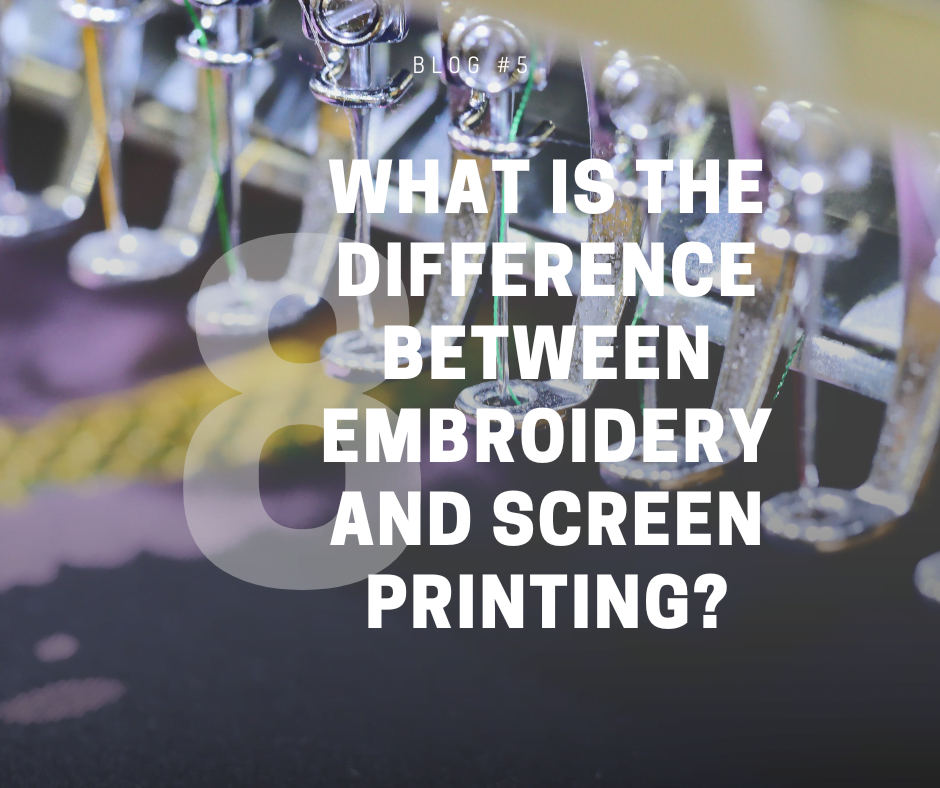Embroidery and screen printing are both popular methods of adding designs or logos to fabric or other materials, but there are some key differences between the two processes:
- Technique: Embroidery involves stitching the design or logo onto the material using a needle and thread, while screen printing involves pressing ink onto the material through a mesh stencil.
- Look and feel: Embroidery creates a textured, three-dimensional effect on the material, while screen printing creates a flat, two-dimensional print. Embroidery also has a more tactile feel to it, as the stitching creates a raised surface on the material.
- Color and detail: Screen printing can produce more vibrant colors and fine detail, as the ink can be applied in thin layers. Embroidery is limited to the number of thread colors that can be used in the design and may not be able to achieve the same level of detail as screen printing.
- Durability: Embroidery is generally more durable than screen printing, as the stitching is less likely to fade or wear off over time. However, screen printing can be more durable if high-quality inks and materials are used.
Overall, the choice between embroidery and screen printing depends on the specific needs and goals of the project, as well as the type of material being used. Embroidery is often used for creating high-quality, long-lasting designs on apparel such as hats, jackets, and polo shirts, while screen printing is often used for creating large, colorful designs on t-shirts and other promotional materials.
